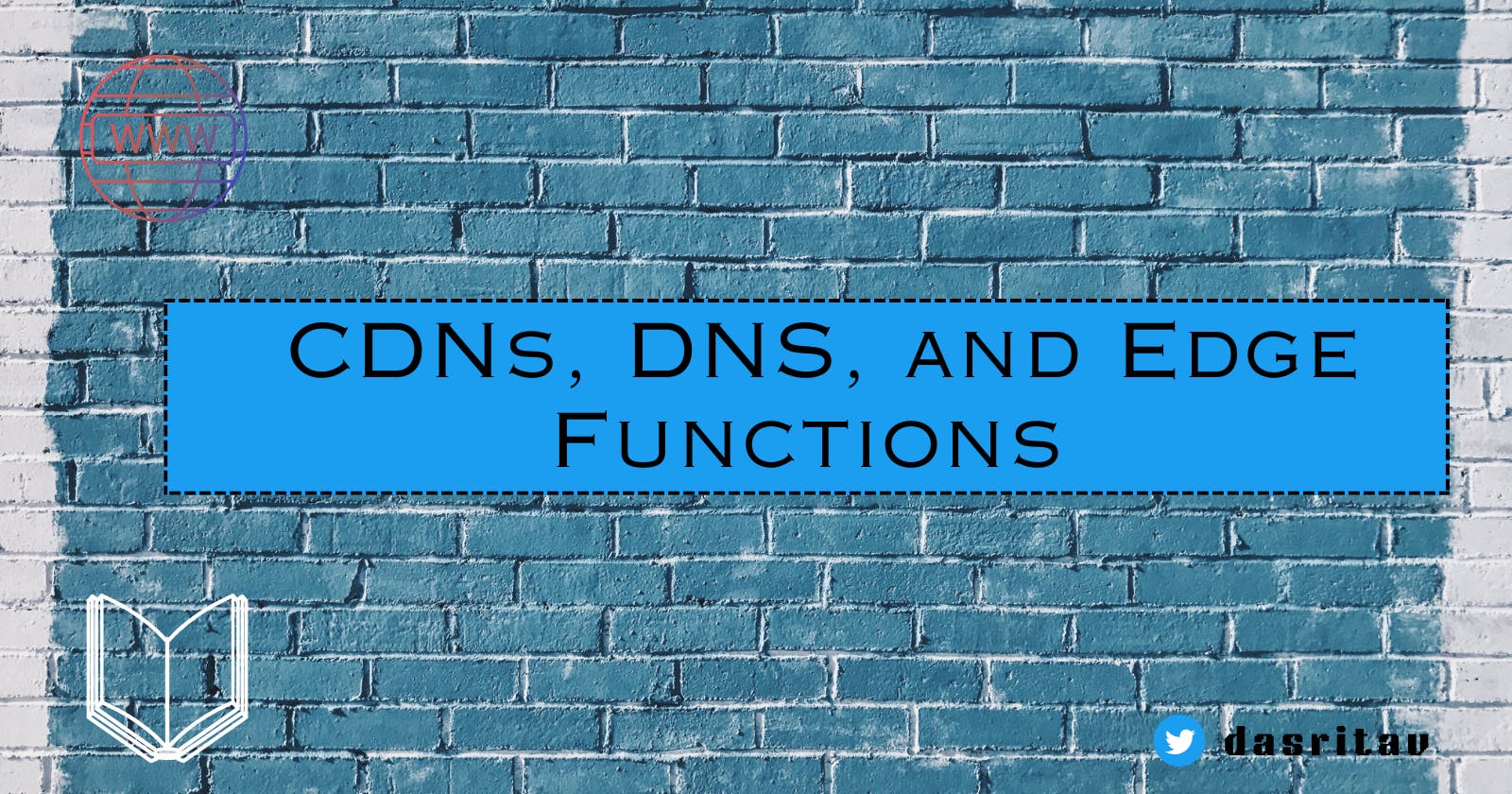The internet is a vast and complex web of connections, but it doesn't have to be confusing. In this blog post, we'll explore some key concepts like CDNs, DNS, and edge functions, breaking them down into simple terms and examples.
What Are CDNs (Content Delivery Networks)?
CDNs are like speedy delivery trucks that bring content (like images and videos) closer to you. Imagine you live far from the bakery, but there's a local shop that keeps your favorite cookies ready. That's what a CDN does – it keeps copies of website content closer to users, so it loads faster.
How Do CDNs Work?
Caching: CDNs store copies of content at various locations called Points of Presence (PoPs).
Delivery: When you request a webpage, the CDN delivers it from the nearest PoP, reducing loading time.
Navigating to a URL and DNS Resolution
When you type a website like "example.com," a lot happens behind the scenes:
DNS (Domain Name System) Resolution: Your computer asks a DNS server to translate the website name into an IP address (like 192.168.1.1).
Finding the Nearest CDN: The DNS directs your request to the nearest CDN server if the website uses one.
Loading Content: The content is then loaded from the CDN or the original server, and the webpage appears on your screen.
What Is DNS and How Does It Work?
DNS is like a phonebook for the internet. When you type a website name, the DNS looks up the corresponding IP address, guiding your computer to the right location.
What Are Edge Functions and Edge Servers?
Edge functions and edge servers take the idea of CDNs a step further:
Edge Servers: These are servers located closer to users, at the "edges" of the network.
Edge Functions: These are custom codes that run on edge servers, allowing for personalized content and dynamic processing.
How Are Edge Functions Different from CDNs?
CDNs: Focus on delivering the same content quickly to everyone.
Edge Functions: Allow for personalized content and more complex processing closer to users.
Example: Personalized Online Store
Imagine an online store that shows different toys based on your location and interests:
With a CDN: Everyone sees the same toys.
With Edge Functions: You see toys picked just for you, and it's still fast!
Conclusion
From speeding up content delivery with CDNs to personalizing experiences with edge functions, these technologies make the internet more efficient and user-friendly. Next time you click on a website, you'll know there's a whole world of technology working to bring it to your screen.
I hope this blog post provides a comprehensive understanding of CDNs, DNS, and Edge Functions. If you have any questions or comments, feel free to leave them below!
You can block my tweets at RITAV DAS (@dasritav) / Twitter
